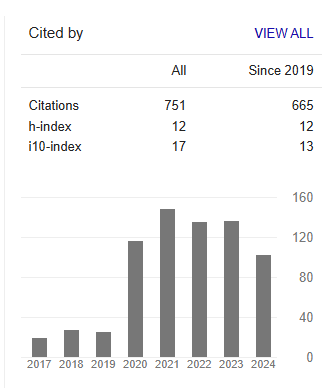The Clinical Characteristics and Outcome of H1N1 Pneumonia Patients with and without Acute Renal Injury
Abstract
ESSAM SAAD ABDEL-RAHIM.BADAWY, MOHAMMED ABDEL WAHAB, SAYED Z.BUKARY AND DALAL FEKRY
Background: Currently, little information exists about the impact of kidney injury and resource utilization in the form of renal replacement therapy in critically ill patients with II1N1 infections.
Objectives: Clarification of clinical characteristics and outcome of acute renal injury in patients with MINI pneumonia.
Patients and Methods: 40 patients who were living in or visitors to Makkah region, admitted to the hospital and revealed confirmatory MINI injection, pneumonia and acute renal injury, were submitted to real-time reverse transcriptasepolymerase chain reaction (rRT-PCR). Severity of illness was assessed by using the Acute Physiology and Chronic Health Evaluation (APACHEJ II, Sequential Organ Failure Assessment (SOFA) score, Multiple Organ Dysfunction Score, and partial arterial 02pressure to the fraction of inspired 02 on high flow oxygen mask(PaOj/FIO?). Another severity score related to theseverity of pulmonary infiltrates (XRChest score) was used and Co-morbidities were recorded.
Results: 77.5%ofthe patients had subjective fever, 72.5% chills, 97.5% cough, 90%fatigue, 82.5% headache, 80% nasal congestion, 70%sore throat, 85% myalgia, 40% ear pain, 37.5% nausea, 20% vomiting. Symptoms severity score of median 19 with range from 14-24. APACHEII score 26.3±9.7, SOFA score 97±3.8, MOD score 9+4.All patients had pneumonia confirmed radiological!}’ with XR-chest score 13.4±3.6. The findings on chest radiographs were consisted with acute respiratory distress syndrome that required mechanical ventilation for 19 out of40 patients, only4 of them survived.
Conclusion: Acute renal injury is an adding impact of increasing the mortality rate of HINI pneumonial patients and may be related directly to the infection by this virusor complication to it which may be explained by severe hypoxia secondary to severe acute lung injury, multi-organ dysfunction. A high mortality in middle and old-aged patients with underlying medical co-morbidities was associated with higher Symptoms Severity, APACHE II, SOFA, MODS, and XRC scores.
Recomondations: Early recognition of the diseaseas well as prompt medical attention to provide opportunities aiming to limit the progression of the illness and to reduce the mortality. Prospective and controlled clinical trials are needed for clarifying the effectiveness of early treatment and protection by using H1N1 vaccination.



